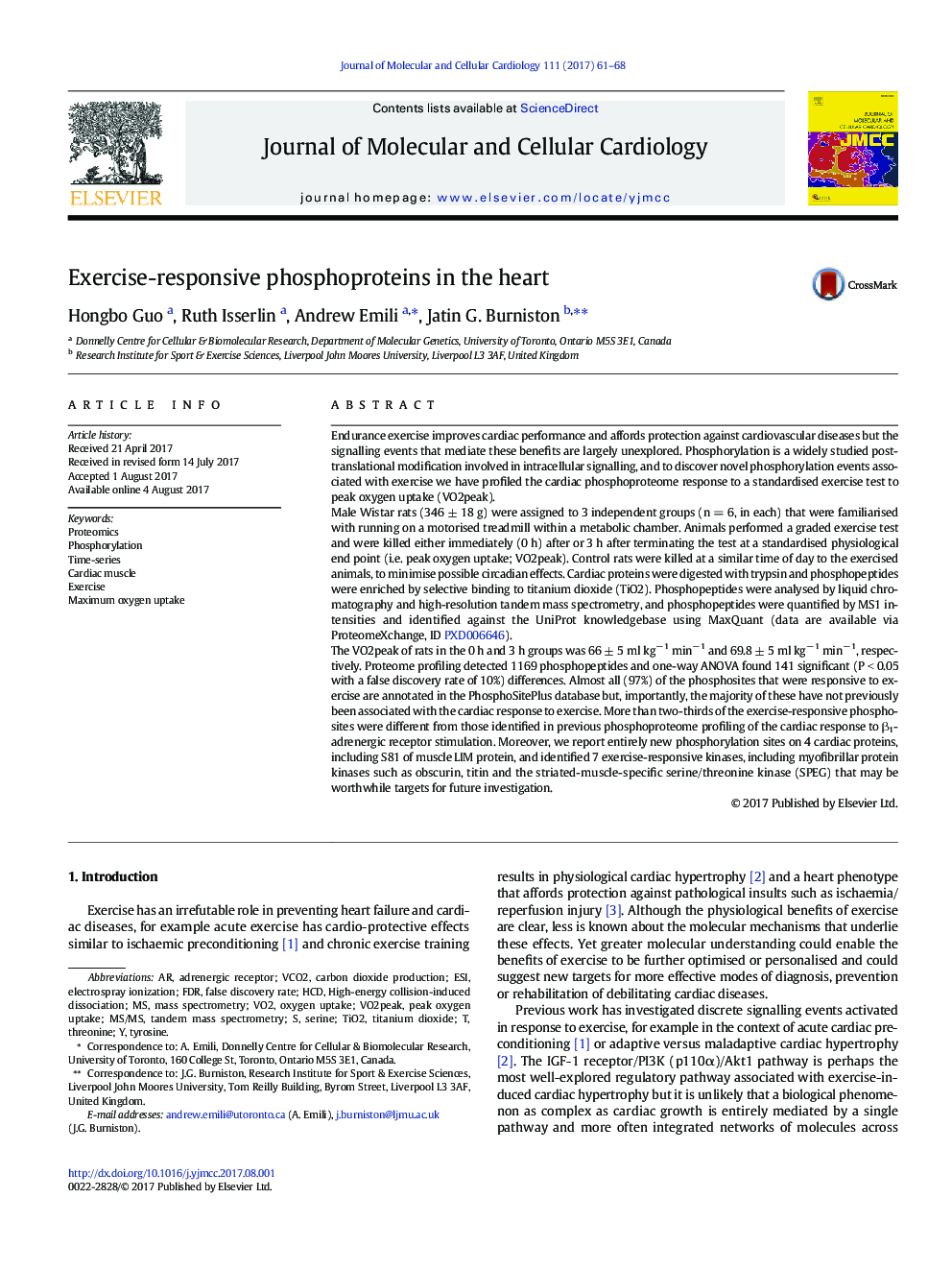| کد مقاله | کد نشریه | سال انتشار | مقاله انگلیسی | نسخه تمام متن |
|---|---|---|---|---|
| 5533629 | 1550395 | 2017 | 8 صفحه PDF | دانلود رایگان |
- Rats performed a tightly-controlled graded treadmill exercise test.
- Exercise terminated at peak oxygen uptake to investigate physiological responses.
- Proteomic analysis profiled 1169 phosphorylation sites.
- 141 phosphorylation sites were responsive to exercise.
- Exercise- and beta adrenergic receptor-responsive sites do not entirely overlap.
Endurance exercise improves cardiac performance and affords protection against cardiovascular diseases but the signalling events that mediate these benefits are largely unexplored. Phosphorylation is a widely studied post-translational modification involved in intracellular signalling, and to discover novel phosphorylation events associated with exercise we have profiled the cardiac phosphoproteome response to a standardised exercise test to peak oxygen uptake (VO2peak).Male Wistar rats (346 ± 18 g) were assigned to 3 independent groups (n = 6, in each) that were familiarised with running on a motorised treadmill within a metabolic chamber. Animals performed a graded exercise test and were killed either immediately (0 h) after or 3 h after terminating the test at a standardised physiological end point (i.e. peak oxygen uptake; VO2peak). Control rats were killed at a similar time of day to the exercised animals, to minimise possible circadian effects. Cardiac proteins were digested with trypsin and phosphopeptides were enriched by selective binding to titanium dioxide (TiO2). Phosphopeptides were analysed by liquid chromatography and high-resolution tandem mass spectrometry, and phosphopeptides were quantified by MS1 intensities and identified against the UniProt knowledgebase using MaxQuant (data are available via ProteomeXchange, ID PXD006646).The VO2peak of rats in the 0 h and 3 h groups was 66 ± 5 ml kgâ 1 minâ 1 and 69.8 ± 5 ml kgâ 1 minâ 1, respectively. Proteome profiling detected 1169 phosphopeptides and one-way ANOVA found 141 significant (P < 0.05 with a false discovery rate of 10%) differences. Almost all (97%) of the phosphosites that were responsive to exercise are annotated in the PhosphoSitePlus database but, importantly, the majority of these have not previously been associated with the cardiac response to exercise. More than two-thirds of the exercise-responsive phosphosites were different from those identified in previous phosphoproteome profiling of the cardiac response to β1-adrenergic receptor stimulation. Moreover, we report entirely new phosphorylation sites on 4 cardiac proteins, including S81 of muscle LIM protein, and identified 7 exercise-responsive kinases, including myofibrillar protein kinases such as obscurin, titin and the striated-muscle-specific serine/threonine kinase (SPEG) that may be worthwhile targets for future investigation.
Journal: Journal of Molecular and Cellular Cardiology - Volume 111, October 2017, Pages 61-68
